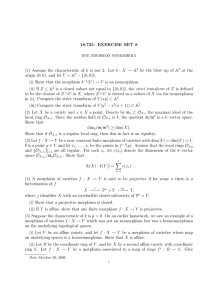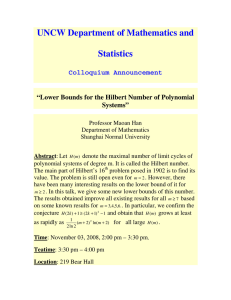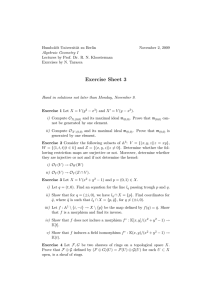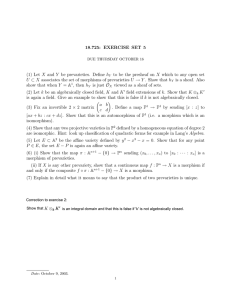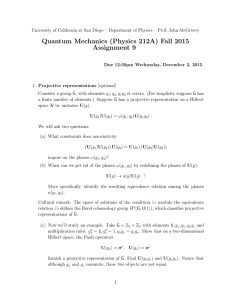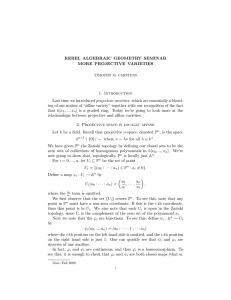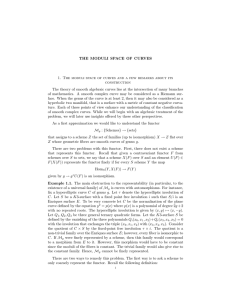18.725: EXERCISE SET 9
advertisement
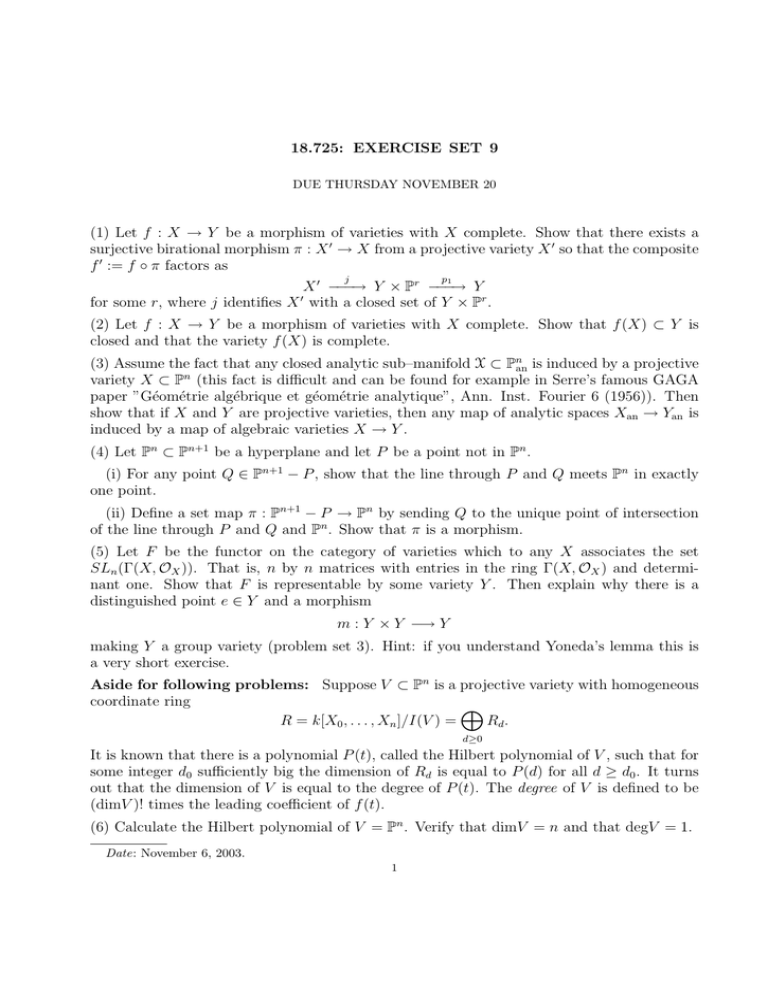
18.725: EXERCISE SET 9 DUE THURSDAY NOVEMBER 20 (1) Let f : X → Y be a morphism of varieties with X complete. Show that there exists a surjective birational morphism π : X � → X from a projective variety X � so that the composite f � := f ◦ π factors as j p1 X � −−−→ Y × Pr −−−→ Y for some r, where j identifies X � with a closed set of Y × Pr . (2) Let f : X → Y be a morphism of varieties with X complete. Show that f (X) ⊂ Y is closed and that the variety f (X) is complete. (3) Assume the fact that any closed analytic sub–manifold X ⊂ Pnan is induced by a projective variety X ⊂ Pn (this fact is difficult and can be found for example in Serre’s famous GAGA paper ”Géométrie algébrique et géométrie analytique”, Ann. Inst. Fourier 6 (1956)). Then show that if X and Y are projective varieties, then any map of analytic spaces Xan → Yan is induced by a map of algebraic varieties X → Y . (4) Let Pn ⊂ Pn+1 be a hyperplane and let P be a point not in Pn . (i) For any point Q ∈ Pn+1 − P , show that the line through P and Q meets Pn in exactly one point. (ii) Define a set map π : Pn+1 − P → Pn by sending Q to the unique point of intersection of the line through P and Q and Pn . Show that π is a morphism. (5) Let F be the functor on the category of varieties which to any X associates the set SLn (Γ(X, OX )). That is, n by n matrices with entries in the ring Γ(X, OX ) and determi­ nant one. Show that F is representable by some variety Y . Then explain why there is a distinguished point e ∈ Y and a morphism m : Y × Y −→ Y making Y a group variety (problem set 3). Hint: if you understand Yoneda’s lemma this is a very short exercise. Aside for following problems: Suppose V ⊂ Pn is a projective variety with homogeneous coordinate ring � R = k[X0 , . . . , Xn ]/I(V ) = Rd . d≥0 It is known that there is a polynomial P (t), called the Hilbert polynomial of V , such that for some integer d0 sufficiently big the dimension of Rd is equal to P (d) for all d ≥ d0 . It turns out that the dimension of V is equal to the degree of P (t). The degree of V is defined to be (dimV )! times the leading coefficient of f (t). (6) Calculate the Hilbert polynomial of V = Pn . Verify that dimV = n and that degV = 1. Date: November 6, 2003. 1 2 DUE THURSDAY NOVEMBER 20 (7) Suppose V ⊂ Pn is equal to V (f ) for some f ∈ k[X0 , . . . , Xn ], where f is irreducible and homogeneous of degree e. Calculate the Hilbert polynomial of V and verify that dimV = n−1 and degV = e.

